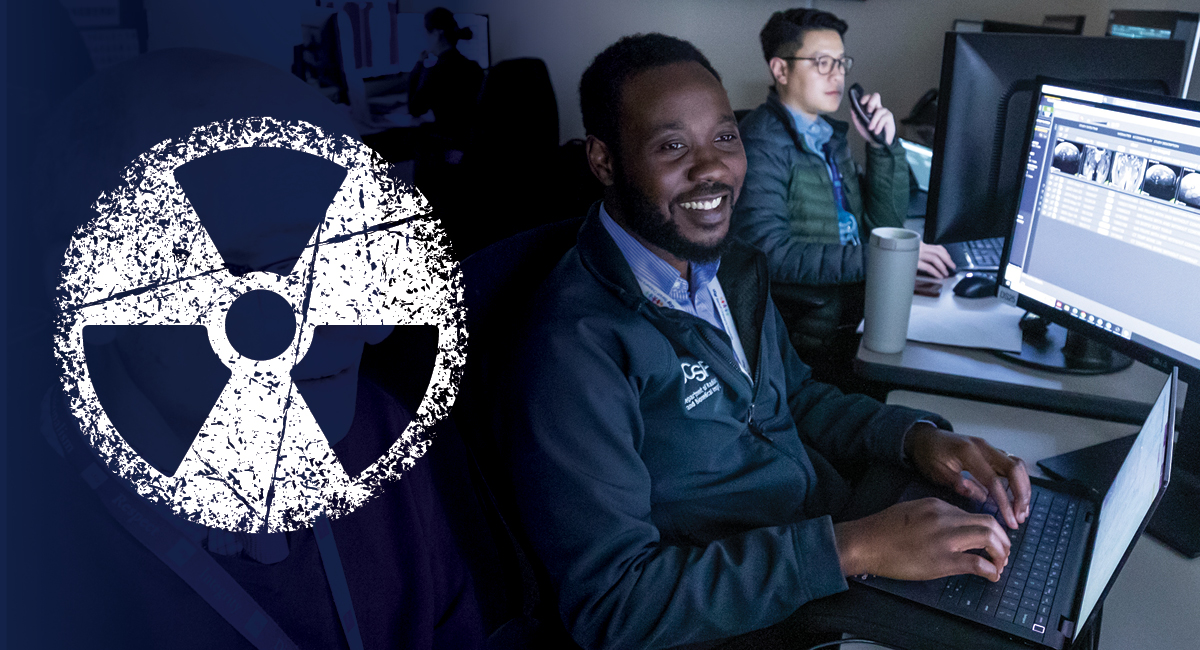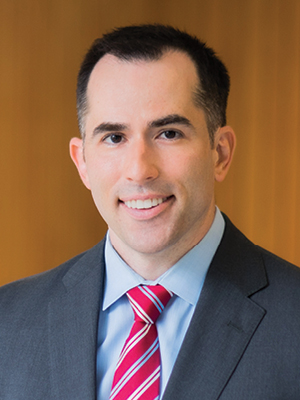Leading the Way to Decarbonize Radiology

In September 2020 the skies of San Francisco turned orange and ashes fell on the sidewalks. The city was surrounded by wildfires. The smoky air obstructed the sun, stinging peoples’ eyes and throats, and posed a particular hazard for sensitive groups such as children and people with asthma. For Sean Woolen, MD, assistant professor of radiology, this moment served as a wake-up call.
“It was an almost dystopian experience, tending to COVID-19 patients in the hospital after being exposed to hazardous air quality due to nearby wildfires,” Woolen said. He was aware of the healthcare sector’s contribution to greenhouse gas emissions and its adverse effects on public health due to climate change. As a result, he felt compelled to take action. Woolen is now leading efforts to ensure that UCSF’s imaging fleet is the first carbon-neutral imaging fleet in the world.
While the exact size of radiology’s carbon footprint remains unknown, the energy-intensive nature of its equipment makes it a significant contributor to the healthcare sector’s 10 percent share of carbon emissions. A single MRI, for example, expends the energy equivalent to powering 12 US homes and one CT unit equates to three US homes.
Woolen collaborated with like-minded individuals at UCSF and Siemens to form a partnership in 2021 aimed at improving sustainability in radiology. Together, they assessed energy consumption, carbon footprint, and actively sought ways to reduce environmental impact.
A Simple Solution with Profound Savings
In April 2023, a retrospective evaluation of MRI power and energy consumption published in the journal Radiology, revealed a groundbreaking solution. Co-authored by Woolen and Christopher Hess, MD, PhD, UCSF chair of radiology, the study demonstrated that switching MRIs from idle to off during the night reduced power consumption by 25-to-33 percent. Implementing an “Eco Power mode” further decreased the power draw by 28%. By powering off and implementing “Eco Power mode,” the US healthcare system could save up to $11 million and reduce CO2 emissions equivalent to 50,000 tons.
 “The idea of powering down is so simple,” Woolen said. He hopes that hospitals and healthcare systems will begin to make the change and has been speaking at conferences across the country on the subject. An encouraging aspect of reducing energy consumption is that it enables simultaneous cost reduction while paving the way for sustainable healthcare and decarbonization. “I hope the potential savings also serves as a catalyst for the healthcare sector to explore more eco-friendly approaches to practicing medicine,” Woolen said.
“The idea of powering down is so simple,” Woolen said. He hopes that hospitals and healthcare systems will begin to make the change and has been speaking at conferences across the country on the subject. An encouraging aspect of reducing energy consumption is that it enables simultaneous cost reduction while paving the way for sustainable healthcare and decarbonization. “I hope the potential savings also serves as a catalyst for the healthcare sector to explore more eco-friendly approaches to practicing medicine,” Woolen said.
The department’s sustainable strategy revolves around the 3Ms: Measure, Message, and Manage. The “Measure” phase seeks to gain a better understanding of the environmental impact of imaging and encompasses the entire lifecycle of scanners, from production and delivery to operations. “We have to measure each of those in order to communicate the impact we can have when designing steps to manage our carbon footprint.” [See related article: Sustainable Aviation Fuels (SAF) reduce carbon footprint for MRI scanner delivery for more on how we’re addressing the delivery and supply chain stage.]
A Collaborative Approach
“A single sector can’t do this alone,” Hess said. “To reduce the energy use of healthcare and radiology, it requires a coordinated strategy among academics, government, industry and patients.”
To develop “Eco power mode” a multidisciplinary team came together under a shared vision of working to make a more sustainable healthcare system. Experts in radiology, energy monitoring and technology, high-voltage electricity, facility engineering, and informatics convened to launch the software update that can be installed on all brands of MRI to reduce energy usage.
The team harnessed existing energy technologies to create a novel energy monitoring program, enabling them to better understand energy consumption and identify methods that decrease usage to ensure a more sustainable path forward. “I think the most important part of the initiative for me is identifying achievable and simple changes that make a significant impact,” Woolen said.
Alastair Martin, PhD, professor of radiology and the department’s associate chair for capital projects, noted that there are a lot of other pieces of sustainability beyond energy use that are critical. “We’re focused on energy not because we think it’s the only important thing, it’s just an area where we see we can have a great impact.”
“I see our department serving as a key leader in this sustainability space,” Hess said. “We have the people in the department to tackle complex issues like this. It allows us to be pioneers and set an example for other medical disciplines.”
Learn more at https://tiny.ucsf.edu/CarbonFootprint
By Rebecca Wolfson
